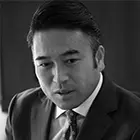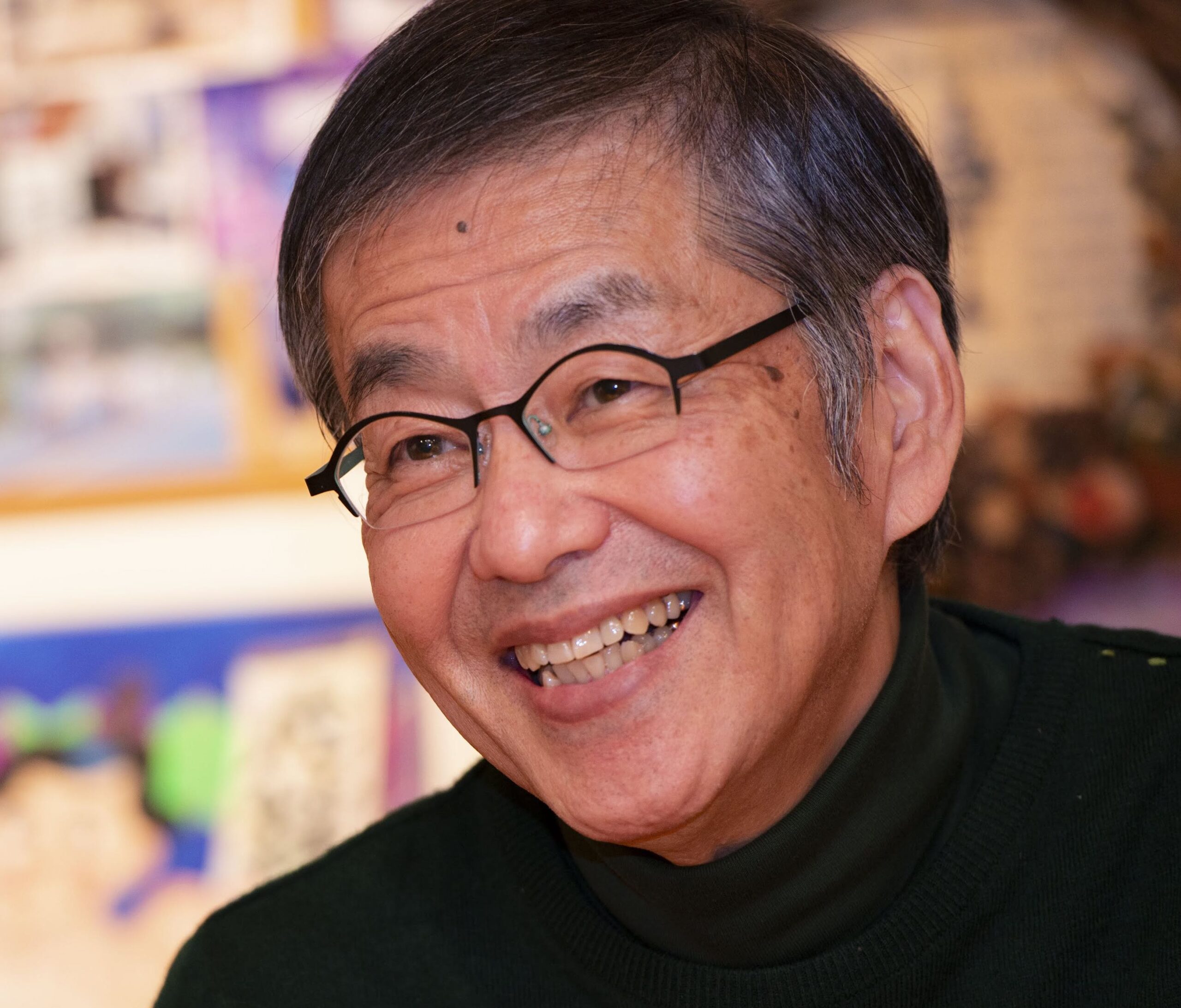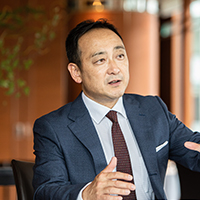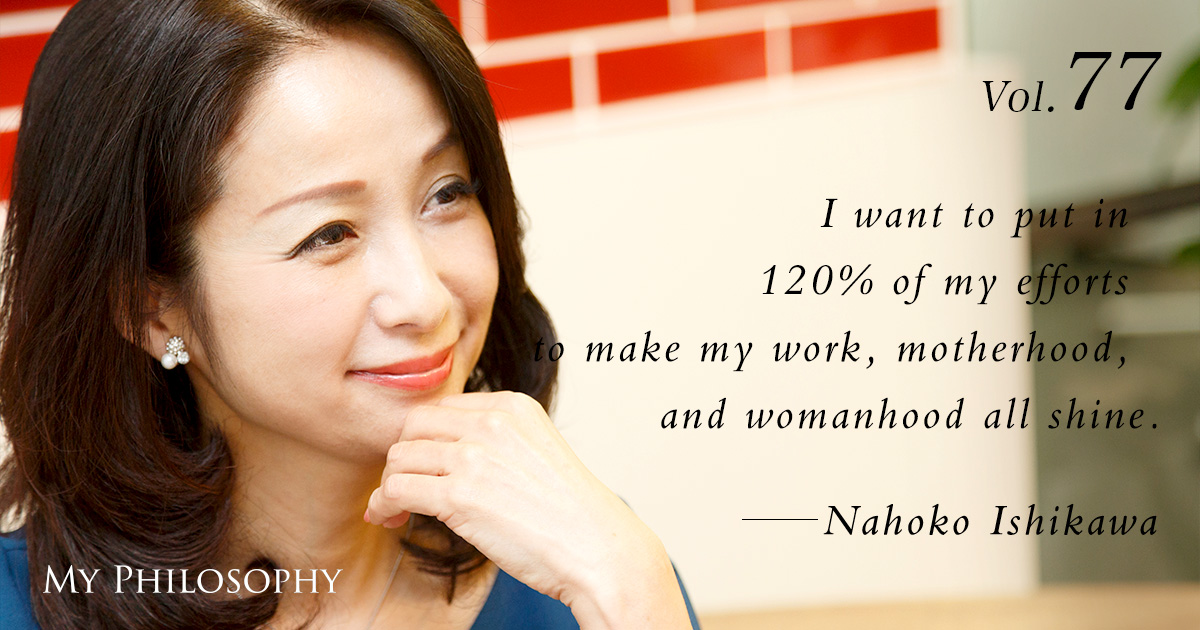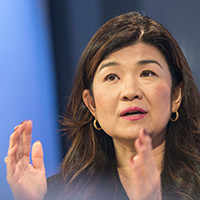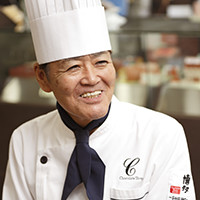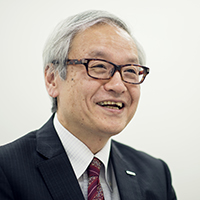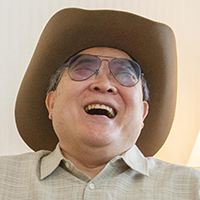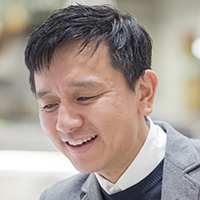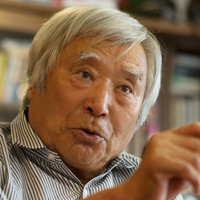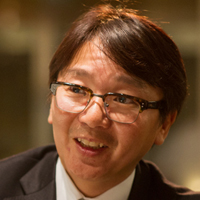
"Jewelry is a sacred art," says Kazumi Arikawa. For over thirty years, Arikawa has devoted himself to collecting jewelry, aiming to share its profound artistry and spirituality with a global audience. His remarkable contributions have been recognized at home and abroad, including being honored with the Chevalier of the Ordre des Arts et des Lettres by the French government. Institutions such as the Metropolitan Museum of Art and the Boston Museum of Fine Arts regularly request his collection for exhibitions.
Arikawa reflects on his deep connection with jewelry and gemstones—creations that hold the power to stir the soul—through the lens of the past, present, and future.
Profile
Vol.118 Kazumi Arikawa
President, Albion Art Co., Ltd.
Founder, Albion Art Jewelry Institute
Chevalier of the Ordre des Arts et des Lettres (French Republic)
International Council Member, Metropolitan Museum of Art (New York)
Kazumi Arikawa was born in Kitakyushu, Fukuoka Prefecture, in 1952. After graduating from the School of Political Science and Economics at Waseda University in 1977, he founded Albion Art Co., Ltd. in Fukuoka in 1985, assuming the role of president. In May 1999, he inaugurated the Tokyo Salon of Albion Art at the Hotel Okura Main Building.
In 2003, Arikawa launched the Albion Art Jewelry Institute (AAJI) as a cultural initiative and played a pivotal role in numerous domestic and international exhibitions, including the 2003 "400 Years of European Jewelry" at the Tokyo Metropolitan Teien Art Museum and three other venues. Other exhibitions include the 2007 "Tiara Exhibition" at the Bunkamura Museum of Art and two other venues and the 2008 "Cameo Exhibition" at the Hakone Open-Air Museum and Fukuoka City Museum. Further, he contributed to exhibitions abroad, such as "Brilliant Europe" in Belgium (2007-2008), "The Pearl Exhibition" in Qatar (2010), the 2022 "Special Exhibition of Gems: Earth's Miracles" at Japan's National Museum of Nature and Science, the 2024 "Emerald Garden: The Exploration of Gems" at L'École Shanghai, and the "DIVINE JEWELS" exhibition at L'École Paris.
From 2005 to 2017, he served as a part-time lecturer on the history of Western jewelry at Tokyo University of the Arts. In April 2009, for his outstanding contributions to the global jewelry field, Arikawa was awarded the Chevalier of the Ordre des Arts et des Lettres by the French government.
Since 2019, he has been a member of the International Council of the Metropolitan Museum of Art.
Albion Art Website
Discovering Gems and a Spiritual Bond with Buddhism

Before discovering gems, my path was marked by twists and turns. Only six months after enrolling at Doshisha University, I was deeply moved by an encounter with a monk from Daitoku-ji Temple. The next day, I submitted my withdrawal and moved to the temple.
Two and a half years later, I enrolled at Waseda University but had to fund my own tuition, so I started a tutoring business. However, without a genuine passion for education and driven largely by the need to survive, I soon reached a dead end, and at 26, I once again sought refuge in Buddhism. It was a profound encounter with an extraordinary Buddhist practitioner that marked the turning point. Under his guidance, I delved deeply into the study of Buddhism and eventually became a monk. One day, my master gave me a task: “There is one word that every great Buddhist teacher throughout history has spoken. Think it over and tell me by tomorrow.”
That night, tormented by the question during zazen meditation, a vision came to me: I imagined killing my master and fleeing—the very man who had embraced me wholly and was guiding my training. Confronted with the depth of my inner darkness, I cried out in despair, “How terrifying!”
The following day, I asked, “Is the word that all the great teachers spoke ‘terrifying’?” My master replied, “Yes. Everyone wishes to see themselves as good. But throughout history, without a single exception, all the great masters have despaired at the profound darkness within their own hearts. It is from that realization that the journey of true faith begins.”
After two years of rigorous training, I came to the conclusion that with my personality and abilities, the way of the monk would be impossible, and so I chose to return to the secular world once again. As I pondered my next steps, the idea of the jewelry business my mother had founded and my sister had inherited came to mind. I believe the awe I felt as a child when gazing at the beautiful gems my mother owned has remained with me. I thought to myself, “Perhaps I’ll try this—there doesn’t seem to be much else for me to do.” Back then, I had no confidence in my character and thought, “Even if I score 15 points for my personality, as long as I take 45 points of responsibility for the jewelry, I might still manage a passing grade of 60.”
The Essence of Beauty and the Power of Inspiration

Guided by my love for Buddhist art, I began collecting statues at a young age, and initially, I believed that sculpture held a higher status than jewelry. In particular, my encounters with Buddhist statues in Kyoto and Nara were decisive in shaping my vision. The impact of seeing the standing figure of the Bodhisattva Maitreya at Kofuku-ji’s Northern Round Hall was beyond words. This sculpture, which embodied the concept of “compassion” with uncompromising realism, conveyed an overwhelming presence I believed unmatched anywhere else in the world.
Yet, one day, I had an astonishing experience at the private residence of a prominent antique dealer in Nara. The instant I opened the case holding the jewelry I had brought, I was struck by a vivid vision: the statues lining the walls seemed to topple over and bow in submission as if to say, “We yield.” At that moment, I felt the beauty of the jewelry surpassed the power of the sculpture. Beauty transcends categories. I understood that art’s true essence resides in the aesthetic life force and beauty intrinsic to each creation. I faced a fundamental question through these encounters: ‘What is a gemstone?’
I had the honor of meeting His Holiness, the 14th Dalai Lama, the supreme authority of Tibetan Buddhism, and when I posed the question, he responded:
“The Buddha manifests in several forms. One is as Dharma (the law or truth). Another of these forms is the Buddha who descended from the realm of truth into this world to save all sentient beings. Many of these Buddhas are adorned with jewelry, such as crowns or necklaces, as a symbol that they have come from the realm of truth to save you. The beauty of that truth, the beauty of paradise, is embodied by the jewelry they wear.”
His words deepened my understanding of jewelry, reaffirming its sacredness and spiritual essence. The fact that the spiritual realms described in Buddhist scriptures are exalted through the beauty of gemstones and jewelry speaks to the intrinsic value of jewelry.
Beauty possesses the power to move the human spirit. Among the gems that left a deep impression on me was the Golconda Diamond from India, mined roughly 300 years ago. Its transparency and purity astonished me, making me question whether anything so pure could exist in the material realm. When I beheld the Dresden Green diamond at the Dresden Museum in Germany, I felt that its beauty was something beyond human creation, an unparalleled splendor.
I have also witnessed a man weep uncontrollably upon seeing Napoleon’s cameo, now housed in the National Museum of Qatar, and three individuals faint with emotion in front of a tiara exhibit.
Jewelry is far more than a mere luxury for women—it holds the power to stir overwhelming emotions. Emotion is both the source and the outcome of art. When touched by beauty, the human soul is stirred and undergoes a profound transformation. And at the heart of that transformation, there likely lies the truth. The experience of being moved by beauty may offer a glimpse into the truth.
Ambition Shapes Reality

One thing I have realized through my work is that ambition has the power to shape reality. My encounter with Lord Camoys, who later served as Lord Chamberlain of the British Royal Household, is a prime example.
At the time, Lord Camoys was serving as vice chairman of both Barclays Bank and Sotheby’s. I shared my vision with him—to create a museum that would showcase a collection of jewelry brimming with sacred, ultimate beauty and leave it as a legacy for humanity. Without inquiring about my background or achievements, he embraced my vision and extended his hand to support me. He immediately introduced me to three key individuals.
Lord Camoys’ sister arranged a rare opportunity for me to personally handle the art collections at both the British Museum and the Victoria & Albert Museum. Diana Scarisbrick, the world’s leading jewelry scholar, served as our official academic advisor for over 30 years, providing invaluable support. When I boldly declared, “I will become the best in the world in this field,” the world’s top jewelry dealer convened a family meeting and resolved to help me achieve that goal. Now, more than 30 years later, they acknowledge, ‘Kazumi has become the best. We can no longer handle works of this caliber.’ This experience taught me that it’s not ability or personality that matters but having a meaningful ambition. When you do, the conditions necessary for its achievement will naturally come together.
The Mindset for Overcoming Life’s Challenges

Over 90% of my life has been marked by continuous challenges. For more than 40 years, I have often felt on the verge of being crushed by the relentless pressure of payments. To share the beauty of jewelry with the world, I have often challenged myself beyond my limits, striving to create something that could rival the emotional impact of the Louvre. Thanks to the trust I’ve built with dealers and collectors worldwide, I can arrange extended post-payment terms to purchase most of the essential jewelry pieces I desire. Thus, payments have always loomed like an unyielding wall, and the pressure of these obligations has constantly overshadowed my life.
Yet I believe that facing difficulties keeps me grounded, allowing me to grow and refine myself as a human being. Suffering humbles me, pushing me to live modestly, while too much success can breed arrogance. I am, by nature, someone prone to such tendencies. The only way to overcome challenges is through direct confrontation. If your ambitions are authentic, all the necessary elements will come together. When challenges arise, hesitation naturally follows. A weakened spirit often surfaces, and I sometimes feel on the verge of collapse. As I repeatedly hit walls and recover, there comes a time when a bright horizon opens up, and I find myself standing on an unanticipated summit.
The thing that has been the greatest help in all of this has been the extraordinary kindness and support of our customers and supporters. I can’t begin to express how much love I have received from so many people. I can only express my gratitude.
The Reappraisal of Jewelry for the Future

In recent years, a global movement has emerged to reappraise jewelry as an art form. Today, Earth’s waters are polluted, its air tainted, and its greenery vanishing at an alarming rate, threatening to strip the planet of its natural beauty. Should beauty vanish from the Earth, humanity will face extinction. Beauty is no longer merely an added value—it has become vital to humanity’s survival. Gemstones and jewelry represent the Earth’s natural beauty, shaped by human devotion and artistry. I believe they are once again poised to play a crucial role in sustaining the human spirit and life.
In the future, the human-centered perspective that everything exists for mankind will likely give way to an Earth-centric view, focusing on how humanity can adapt and thrive within a healthy ecosystem that supports all life forms. My ideal is the creation of sacred beauty and awe through jewelry. I aim to create a collection that will evoke profound emotion even 1,000 years from now, offering people the chance to experience it at the highest possible level. Perhaps my humble worth lies in my ability to sustain this ambition.
Bringing together humanity’s finest jewels in a collective effort is akin to creating a ‘Louvre of Jewelry.’ The true value of the Louvre lies not in its structure or its scholars but in the masterpieces it houses and the profound emotions they stir in those who encounter them—that is its essence. To gather is to become the Louvre. When people visit this museum, spend time with its gathered jewels, and depart, they will feel their hearts cleansed and their souls purified. I pray that this museum will eternally move the hearts of people across the globe, purify humanity’s spirit, and continue to cleanse the Earth.
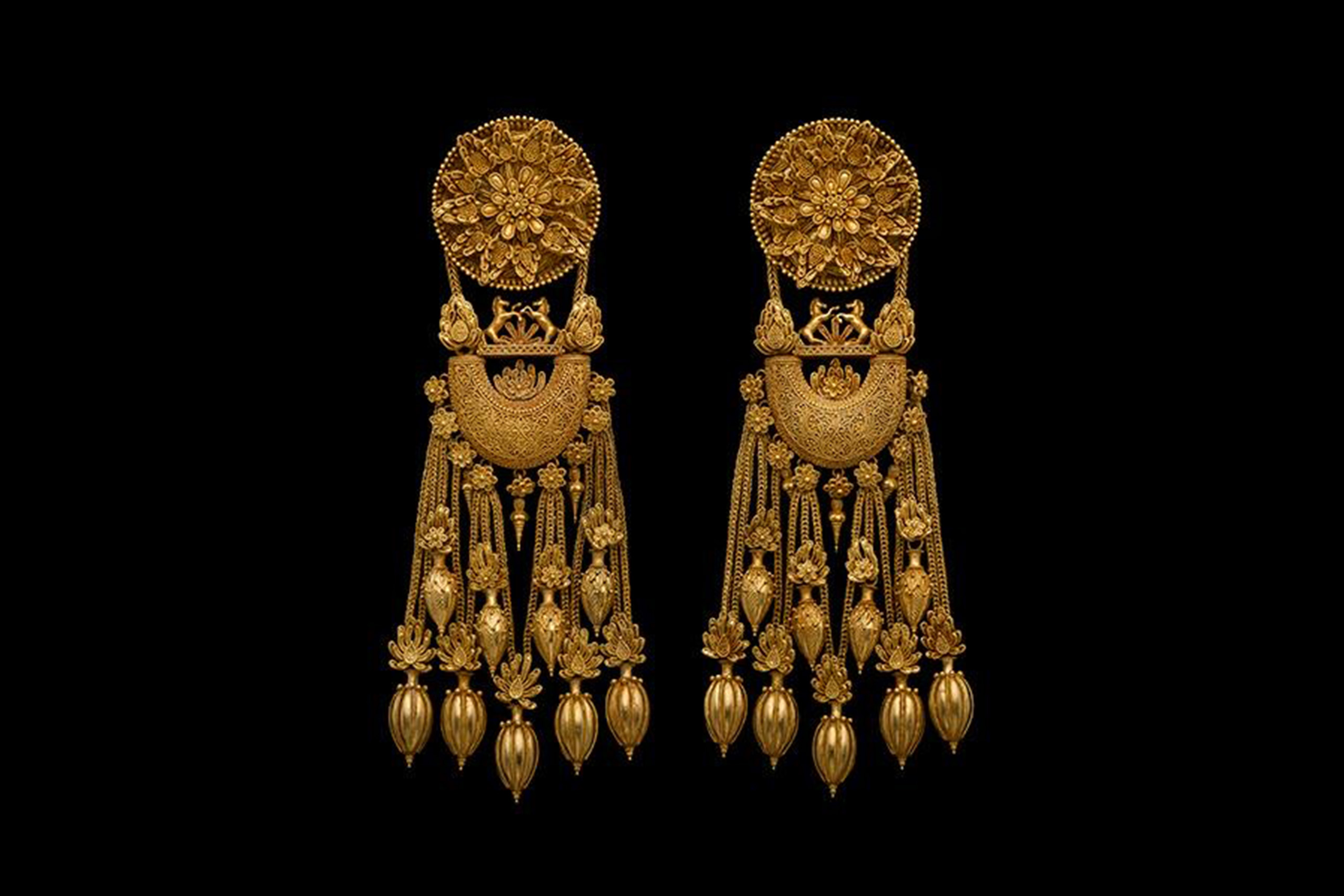 Hellenistic Gold Earrings *around 300 BC
Hellenistic Gold Earrings *around 300 BC
<Description>
A pair of Greek 4th century BC Gold earrings, composed of various elements executed in granulation and filigree. The front of each top disc is decorated with a rosette encircled by palmettes within a beaded border, and from loops on the smooth back hang chains supporting a boat shaped pendant covered with granulated symmetrical scrolling ornament surmounted by a pair of horses prancing together, flanked by palmettes, the back smooth. Attached to nine rosettes below hang eight alternately long and short loop in loop chains terminating in seed like ribbed and globular pendants crowned with palmettes. From the centre rosette hangs a short pyramidal pendant: two more are attached to other rosettes. Greek, 4th century. B.C.
<Provenance>
Francesca Artuner of Belgium, 1960s and thence to her daughter, private collection USA. Expert Appraisal from Jack Ogden attached.
<Commentary>
These earrings illustrate the beauty and delicacy of Greek jewellery of the best period. Each of the many motifs- rosettes, palmettes, prancing horses, scrolls, seeds- is executed in the classical goldsmith’s techniques of granulation and filigree with extraordinary finesse. Moreover, in addition to the variety of these motifs their abundance points to the original owner as being a woman of great wealth and high status. The effect of these pendants swinging against her long black hair and catching the light of the sun must have been very impressive. They belong to a group of similarly intricate and elaborate earrings found on Crete, in Northern Greece, East Greece, and on both the northern and southern shores of the Black Sea.
Cf J. Ogden and D. Williams, Greek Gold: Jewelry of the Classical World (British Museum 1994) no. 63.
Diana Scarisbrick MA, FSA
Jewellery Historian
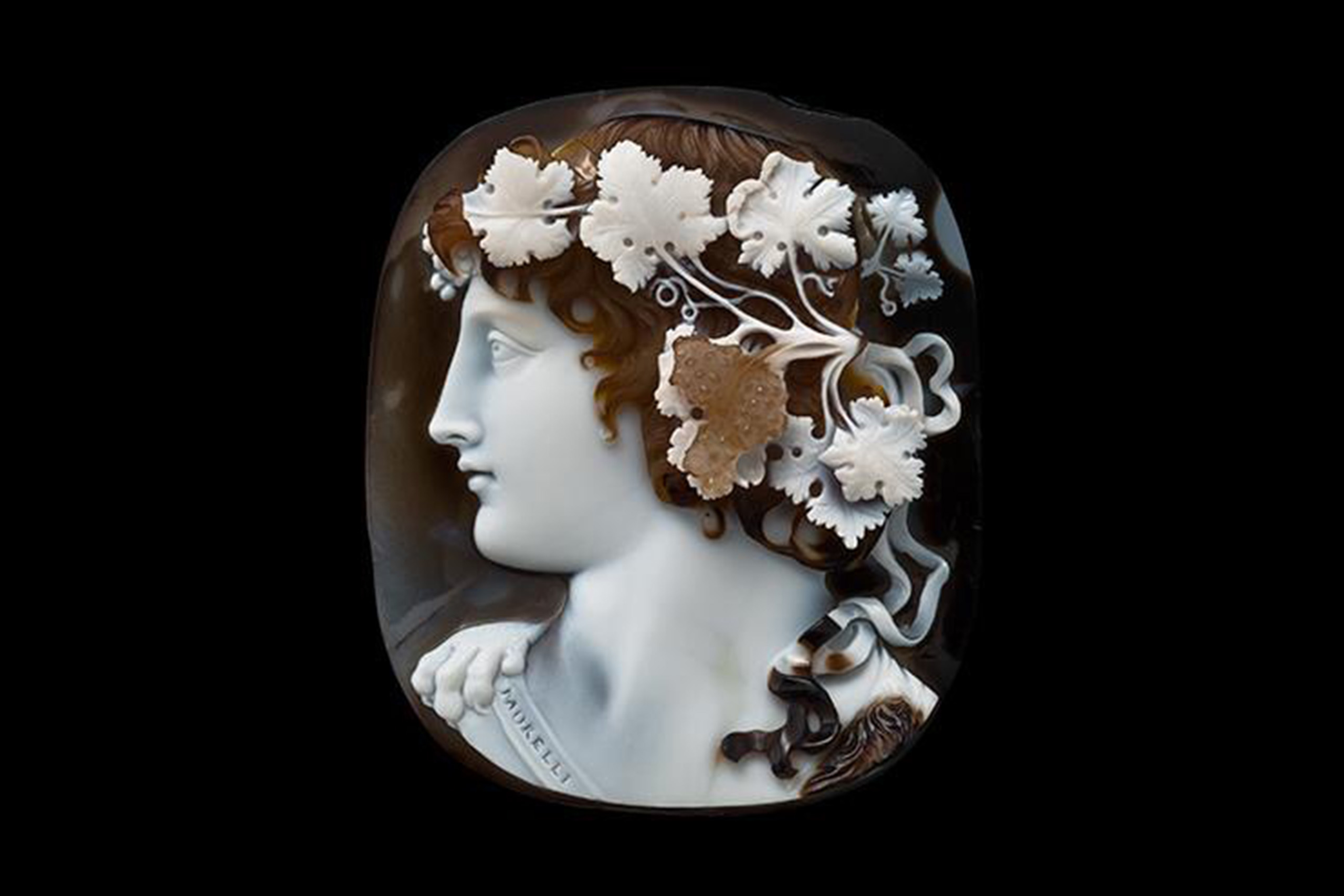 Bacchus Cameo by Nicola Morelli *the early 19th century
Bacchus Cameo by Nicola Morelli *the early 19th century
<Description>
Sardonyx cameo of Bacchus, dark curly hair garlanded with grapes and vine leaves, tied with ribbons falling onto his shoulder, wearing animal skin, one paw visible on left at neck, dark pelt on the right, facing in profile towards the left. Signed in Roman capitals on baldric MORELLI, for Nicola Morelli (1771-1838) , Rome, c.1810.
<Provenance>
Caroline Murat, Queen of Naples and Sicily, her gift to the Moore family, thence by descent.
<Commentary>
Here, Morelli has utilised the five layered sardonyx to create a masterpiece of gem engraving, uniting the arts of sculpture and painting. The refined pure white profile, neck, shoulders, and animal paw which are set against a dark and greyish ground, contrast with the rich chestnut brown of the curly hair, which in turn sets off the white stems and leaves of the vine, and culminates in the almost transparent bunch of grapes covering the ear. The size of the stone and the uncertainty of the depth and extent of these differently coloured layers presented a huge challenge to Morelli, which he has met so successfully that they seem placed by Nature exactly where he needed them for his composition. Since he executed cameo portraits of members of the Bonaparte family, cf L. Pirzio Biroli, Nicola Morelli, Incisore in Pietre Dure, Bolletino dei Musei Communali di Roma, VI (1992) pp. 63-76), he was known to Napoleon’s sister Caroline and her husband Joachim Murat who reigned in Naples from 1808-1814, and in accordance with the policy of the Emperor actively patronised the arts. Morelli was not only a portraitist but specialised too in mythological themes associated with the worship of Bacchus, god of wine which were particularly favoured in the early nineteenth century. Here he has portrayed Bacchus as a slightly effeminate, young man, absorbed in thought, as if in a dream.
This image of idealised beauty which has the grandeur of monumental sculpture represents the final flowering of the traditional Roman art of gem engraving.
Diana Scarisbrick MA, FSA
Jewellery Historian
 Belle Époque Diamond Pinks Tiara by Chaumet *around 1905
Belle Époque Diamond Pinks Tiara by Chaumet *around 1905
<Description>
A Belle Époque diamond and platinum millegrain tiara by Chaumet, composed of a graduated groups of pinks [Dianthus; The Latin name for pinks] mounted en tremblant on stems rising from a circlet of stems and buds, set throughout with cushion-shaped old brilliant-cut and rose-cut diamonds, centred on an old brilliant-cut diamond weighing 19.56 carats [detachable to form a pendant]. Chaumet, Paris, 1905.
<Provenance>
Madame Henri Wendel for her son, François, on his marriage to Odette Humann and thence by descent to a member of the De La Rochefoucauld family.
<Commentary>
Here Joseph Chaumet shows his mastery of the tiara, grandest of all jewels. The naturalistic theme of pinks, rare in mainstream jewellery at this date, indicates the influence of the Art Nouveau, but interpreted in intrinsically valuable platinum and diamonds. The choice of this flower is highly appropriate for a marriage gift in that in the Language of Flowers, the clove pink can be used to represent true love.
Chaumet has created a brilliant effect of bunches of light and delicate flowers, moving as if blown by the wind, with the large diamond radiating out even more light from the centre. This diamond is detachable for use as a pendant. A few weeks after delivery of this tiara on November 10th, 1905, Madame Wendel received a stomacher brooch also representing pinks, so that her daughter-in-law might wear the two en suite when required. One other of this design is recorded, made for an English client, but not all white, as here, but set with emeralds and diamonds. The influential Wendel family belonged to a dynasty of iron masters, established at Hayange in South East France from 1704, and who supplied the artillery for Napoleon’s victorious armies. Thereafter, the Wendels continued to prosper, diversifying into other branches of mining and industry and during the twentieth century François, whose wife wore this tiara, became Regent of the Banque de France.
Diana Scarisbrick MA, FSA
Jewellery Historian
Mr.Sugiyama is a very optimistic person. The speed of his work is such that even Superman would be unable to keep up. He is also extremely sincere and kind to others. It is hard for me to keep up with him, but he pulls me along with him.
I have always thought of the main character as the jewelry in the work, and have avoided appearing in the media as much as possible, but I was drawn in by Mr.Sugiyama's charm and decided to appear in “My Philosophy” this time. I am very grateful for this opportunity.
I am truly amazed by the extent of Mr.Sugiyama's love for people around the world, as he has continued to produce this article 112 times since 2007 without any sponsors. I wish him continued success in the future.
Kazumi Arikawa, President, Albion Art Co.

Three years have passed since I first met Mr. Kazumi Arikawa. Mr. Arikawa is a renowned collector, and I have asked him to be interviewed for “My Philosophy” about ten times so far. Every time I meet him, I am moved by his stories and gain some new perspective or inspiration.
A year ago, before my meeting with Mr. Arikawa, I had been cheated by a fraudster and people without a sense of morality, and I had experienced something that made me doubt human conscience, and I had suffered serious damage, both financially and mentally. Because of this, I was so worried that I almost cancelled the meeting, but I still decided to go as planned. Mr. Arikawa noticed that I was looking pale, and when I told him about my situation, he told me about his own multi-billion yen business dealings, and I was amazed by his epic story, which was like something out of a movie. Hearing this, I realized how small my problems were, and how small my own character was.
After that, when I consulted Mr. Arikawa about my worries, he listened to me with a sincere heart and told me about the power contained in jewels and the stories of jewelry from the Renaissance period. I was fortunate enough to have the opportunity to purchase a part of Mr. Arikawa's important collection. It is an intaglio (reverse engraving) ring of Socrates made in the 18th century. When I learn the story behind the jewelry, I feel that wisdom and strength naturally well up within me each time I wear it.
This year marks the 17th year of “My Philosophy,” and this interview was the 113th. I can't help but feel a connection to the fact that the number 113 contains the kanji characters 一 (one) and 三 (three) from the name of Kazumi Arikawa(有川一三), who appeared in this interview. Mr. Arikawa, who gave me the opportunity to enter the world of jewelry, is a world-class collector representing Japan with unparalleled experience and aspirations. Mr. Arikawa taught me that to maintain beauty and intelligence and make life truly meaningful, one must constantly refine their aspirations. I would like to express my sincere gratitude to Mr. Arikawa for allowing me to conduct this in-depth interview in the tea room of the Albion Art Tokyo Salon Ari-an, and to the staff for their cooperation.
DK Sugiyama, Editor-in-Chief of “My Philosophy"
September 2024, Albion Art Headquarters, Ari-an.
Interview and editing by: DK Sugiyama
Project Manager: Chiho Ando
Written by Eri Shibata (Assistant Editor-in-Chief, “My Philosophy”)
Translation: Alex Queen
Photography: Erina Hamaya

























